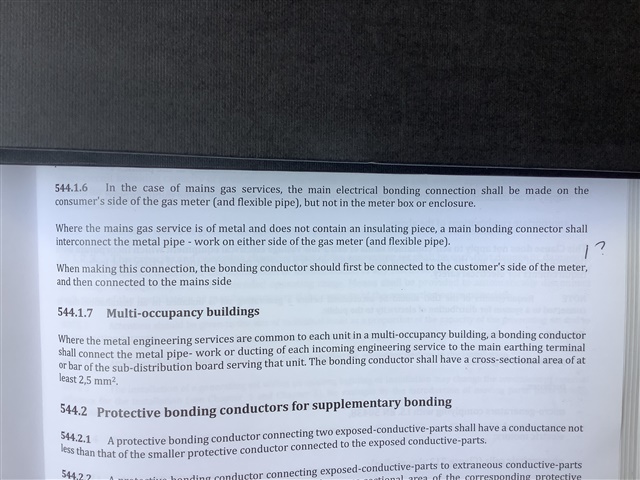I was on FaceBook the other day a saw a meter box which had the gas meter removed. They had connected an Earth/Bond cable to the 2 ends of the remaining now defunct gas pipes. It seems this is standard practice when a Gas meter is removed.
Several questions and points to discuss
If there is NO earth clamp on the customer side of gas meter within the permitted length of 600 mm of the outlet union of the meter; and before any branch (tee) in the pipework should the Earth bond be installed by the Gas meter engineer? The practice of just putting the bond across where the gas meter used to be without proper consideration means that a healthy Ze and Zs could be compromised. Additionally they could accidentally introduce potential into the building. Do the Gas meter engineers test to see if this is an Extraneous conductive part?
Scenario 2
There is an Earth Bond of customer side of meter do the Gas meter engineers check with a clamp meter to see if there is mA or Amps. mA probably being acceptable but Amps not acceptable. Consider a PEN fault
As always please be polite and respectful in this purely academic debate.
Come on everybody let’s help inspire the future.
